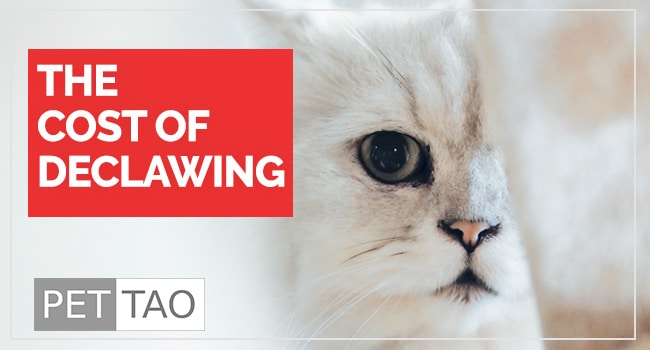New York State recently made headlines for potentially becoming the first state to ban declawing cats.
Declawing is currently illegal in Australia, Britain and several European countries, as well as Los Angeles and some other cities in California.
Current estimates suggest pet parents declaw about a quarter of all cats.
While some encourage legal measures banning declawing, others think declawing is a necessary last resort for some pet parents.
Why Declaw Cats?
Many pet parents declaw their cats to protect their furniture and curtains and to prevent scratches.
Creating a declawing ban may indirectly force more cats into shelters, as owners decide between saving their furniture and loving their pets.
As such, many veterinarians oppose a declawing ban, since declawing sometimes saves cats from ending up in shelters, or worse, euthanasia.
5 Reasons Why Cats Need Their Claws
Cats truly thrive with their claws intact.
Veterinarians practicing Traditional Chinese Veterinary Medicine (TCVM), such as PET | TAO co-founders Drs. Smith and Damron, likely recommend against declawing.
Here are a few reasons why:
1. Exercise
Cats use their claws to stretch their muscles, preventing injury when playing.
2. Protection
Outdoor cats, and indoor/outdoor cats, need claws to protect themselves.
Cats use their claws to climb trees when escaping predators.
Cats also use their claws for self-defense, even just showing them to scare away potential predators.
3. Balance
Declawing a cat is not like trimming its nails.
To declaw a cat, veterinarians remove the claw and related bone and muscle tissue.
With these vital body parts missing, cats can have trouble balancing.
4. Preventing Health Issues
Declawed cats suffer from a variety of ailments including joint stiffness and sensitivity at the surgery site.
As such, some declawed cats avoid scratching in their litter boxes.
5. Marking Territory
Declawed cats will continue to scratch furniture.
Scratching is a natural trait for making territory.
Top 5 Declawing Alternatives
In order to protect your home from cat scratches, several humane alternatives to declawing are available.
1. Nail Caps
Some owners declaw to prevent their cats from scratching them.
Nail caps are an excellent option for preventing skin scratches.
Nail caps for cats look like a nail but are hollow inside.
The caps slide on over the nail, with some adhesive.
Nail caps effectively blunt the sharp edge of a cat’s claw.
2. Scratching Posts
If a cat scratching your furniture is a concern, scratching posts are ideal.
Scratching posts give cats a natural outlet for their inherent desire to mark their territory.
3. Trimming Nails
Trimming your cat’s nails will not prevent him from scratching, but could limit the damage done from a scratch.
Getting your cat comfortable with you holding his paws may be difficult.
Your local veterinarian can assist.
4. Cat Pheromones
Cats scratch to mark their territory.
Cats have scent glands in their paws, which they use to mark.
Once a cat marks a spot with its scent, it is unlikely another cat with mark the same spot.
Some pheromones available at pet stores or online mimic the scent of cat pheromones.
Cat owners spray this product on furniture and carpets to keep cats from wanting to mark their scent.
5. Textural Aversions
Cats have aversions to certain textures.
Place aluminum foil, double-sided tape, or the spiky side of a carpet runner on places kitty likes to prevent him from scratching.








